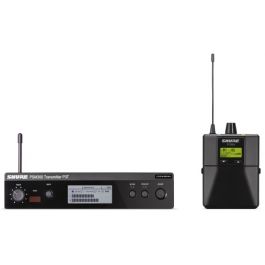Hi All,
I have been doing some research on wireless headphone/earphone monitoring and understand some basics. I have only started looking yesterday and so am not an expert, but it seems that this is the sort of system I should be looking at. Note this is just an example, I am not thinking yet of getting this.

 www.pmtonline.co.uk
www.pmtonline.co.uk
These are my requirements:
Any help appreciated.
Ben.
I have been doing some research on wireless headphone/earphone monitoring and understand some basics. I have only started looking yesterday and so am not an expert, but it seems that this is the sort of system I should be looking at. Note this is just an example, I am not thinking yet of getting this.

Shure PSM300 Premium Personal Wireless Monitor System
The PSM300 Premium Stereo Personal Monitor System delivers detailed 24-bit digital audio processing and reliable wireless freedom to every corner of the stage.
These are my requirements:
- The set up is a 12 piece band, most of which is going through a PA, so the transmitter would be plugged into that. I am probably between 5 and 7 metres away from the PA and don't want any cables running between me and the PA.
- I would like some output jacks on the transmitter perhaps to support singers who are happy to have a cable connection to the transmitter.
- I also want to use the metronome on my phone, but it seems the only way to do that is to make the phone an input into transmitter, It would be great if I could make the phone an input into the receiver. Ideally I would like a Bluetooth solution coming off the phone. I suspect this isn't easily achievable so maybe some way of making a phone Bluetooth connection to receiver? assuming the receiver and dual input.
- I will probably start out with headphones initially but may switch to earphones in the future (not sure that affects anything).
- This is not a pro band and I am not a pro; the Shure solution with headphones looks like it would cost £1000+. This is much more than I was envisioning. But I don't want to get something that I regret in a few years and so will spend the minimum necessary.
Any help appreciated.
Ben.


